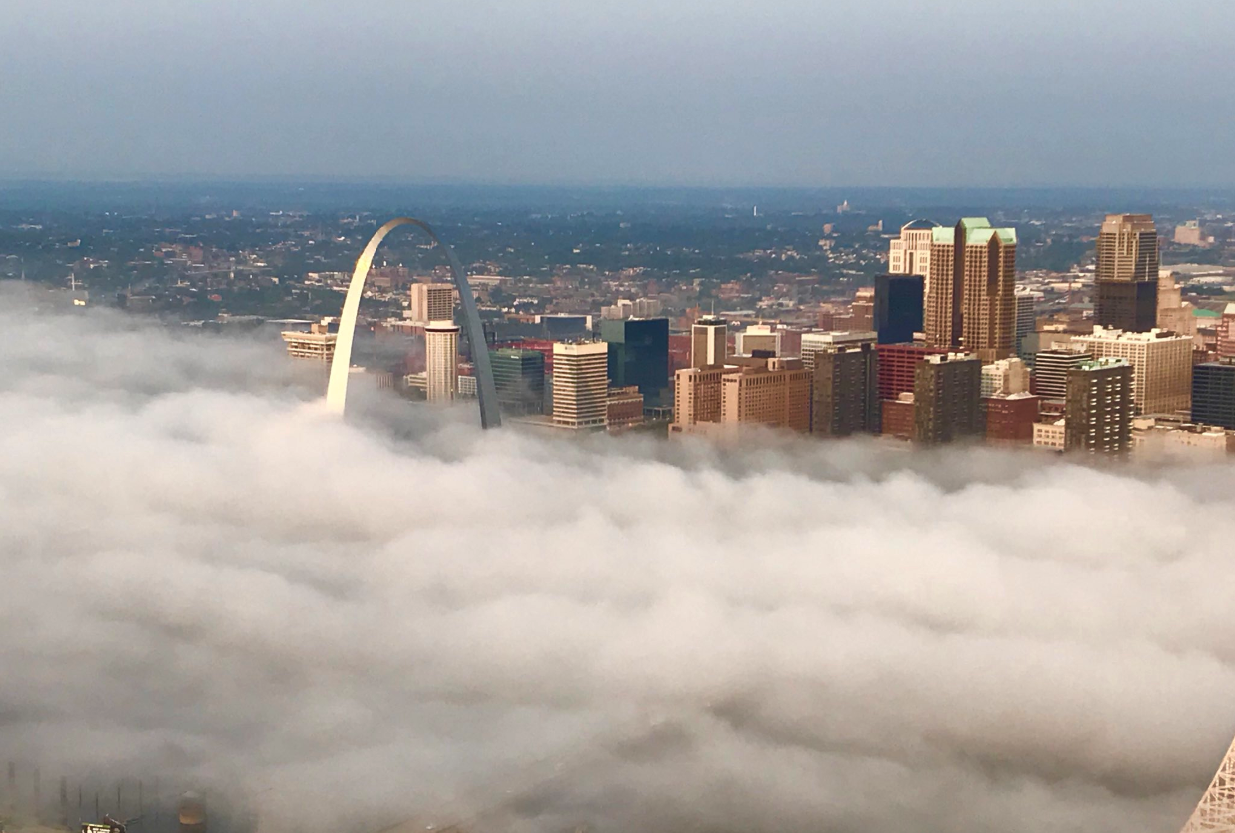The American Lung Association’s 2021 “State of the Air” report is out, and though the data indicates some nationwide progress on cleaning up air pollution, 41.1 percent of the population — more than 135 million Americans — are still living in areas with unhealthy air quality. While this is 14.8 million fewer people breathing unhealthy air compared to the years covered by the 2020 report (2016-2018), there is still much work to be done to protect our local communities from the growing risks to public health resulting from high levels of ozone and particle pollution.
For the fifth consecutive year, the St. Louis region escaped being ranked among the most ozone-polluted cities in the U.S., however, the area landed in a four-way tie for the 20th spot on the list of most-polluted cities by year-round particle pollution. Rising global temperatures and disruption of both short and long-term weather patterns caused by climate change are reportedly making it harder to protect human health and putting millions more people at risk, including those in the St. Louis region and far too many other cities across the nation. Despite the three years included in this year’s report (2017-2019) being relatively cooler than those in the previous report, they still rank among the six hottest years on record globally.
“While weather conditions do play a significant role in our region’s daily air quality, the dramatic reductions in transportation-related emissions during the pandemic provided a compelling reminder that our commuting choices affect air quality and the health of the region,” said Susannah Fuchs, Director of Clean Air for the American Lung Association in Missouri. “As we prepare to settle into the summer months when we’re at greater risk for higher levels of ozone pollution, the Clean Air Partnership is calling attention to the trends observed during 2020 to encourage area residents to remain steadfast in their efforts to take voluntary steps to reduce emissions. These include the continuation of eco-friendly actions like telecommuting and giving greater consideration to alternatives to the solo commute like the region’s public transit system, ridesharing and bike-sharing services.”
As the nation continues to respond to the COVID-19 pandemic, research shows that reducing air pollution is critical for respiratory health now and in the future, especially for populations most at risk, such as children and older adults, people of color and individuals with underlying health conditions. With the air quality forecasting season resuming May 1st, so does the Partnership’s seasonal outreach to educate residents of the St. Louis metro area about the health risks associated with poor air quality and the impact of everyday actions on the environment. Actions like combining errands into a single trip, not topping off your gas tank, avoiding vehicle idling or even opting for electric vehicles can also greatly impact the amount of ozone-forming emissions on any given day and help people across the region breathe easier.
For additional information on the health effects of poor air quality, tips for doing your share for cleaner air and to sign up to receive the daily air quality forecasts, visit www.cleanair-stlouis.com. You can also like the Clean Air Partnership on Facebook or follow @gatewaycleanair on Twitter to stay up to date. To access the American Lung Association’s 2021 State of the Air report, visit www.lung.org.

